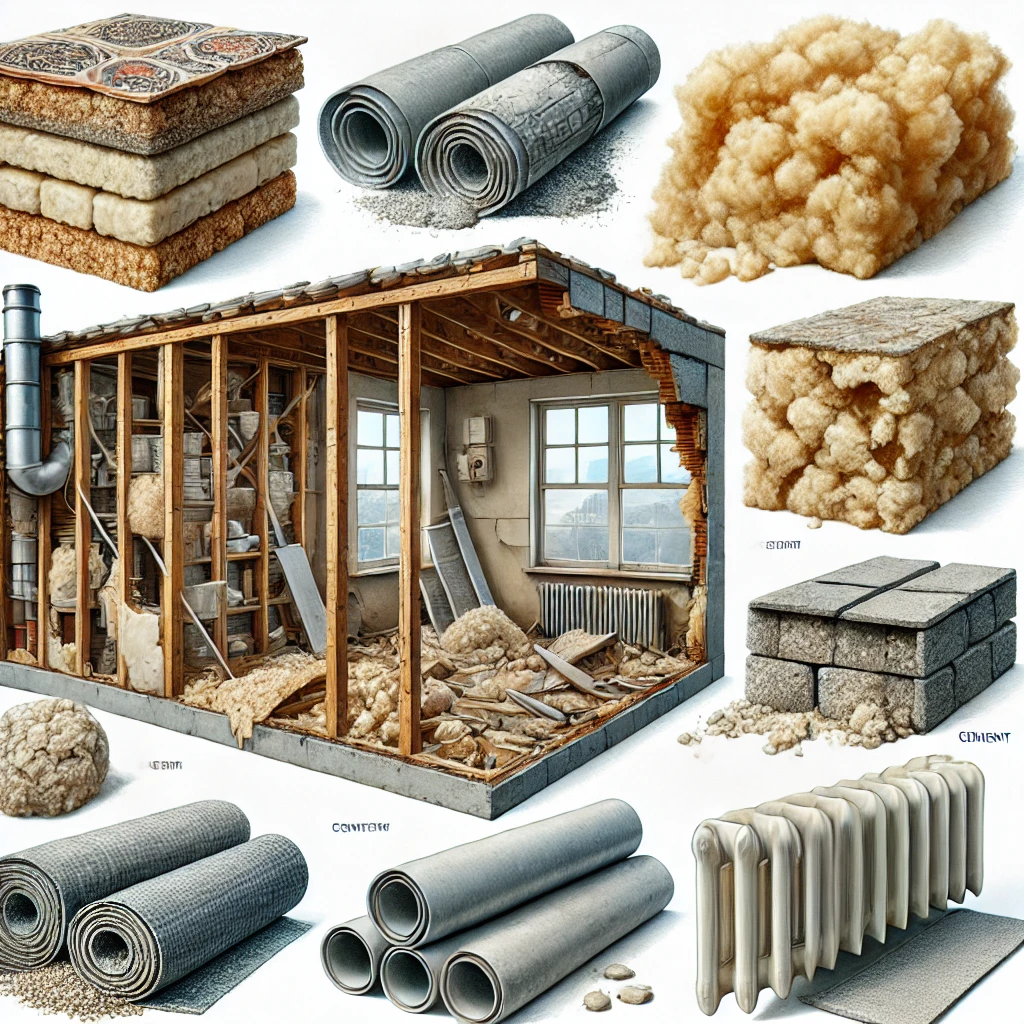What Does Asbestos Look Like? Recognizing the Appearance of Asbestos
Asbestos is a group of six naturally occurring minerals made up of thin, fibrous crystals. Due to its fire-resistant properties and durability, asbestos was widely used in building materials and insulation throughout much of the 20th century. However, asbestos exposure is now known to cause serious health problems, including mesothelioma, asbestosis, and lung cancer. Recognizing asbestos is essential for safely managing it, especially if you live in or work with older buildings.
1. The Basics of Asbestos Appearance
In its natural form, asbestos appears as a fibrous mineral with tiny, needle-like fibers. However, asbestos is rarely found in its raw state in most homes or buildings. Instead, it’s often mixed with other materials to create a durable composite. The appearance of asbestos-containing materials (ACMs) can vary widely depending on the product and how it was used.
- Color: Asbestos itself can range in color from white to blue, brown, or green, depending on the type. However, asbestos products usually take on the color of the materials they’re combined with, such as insulation, cement, or tiles.
- Texture: In its natural form, asbestos is fibrous, but it may feel gritty or dusty in products where it’s been mixed with cement or other hard materials.
2. Types of Asbestos and Their Appearance
There are six types of asbestos, each with slightly different characteristics and appearances:
- Chrysotile (White Asbestos): This is the most common form of asbestos, characterized by its fine, curly fibers. Chrysotile fibers are flexible and can easily be woven into cloth. It’s often found in ceilings, roofs, walls, and floors of older buildings.
- Amosite (Brown Asbestos): Known for its straight, brittle fibers, amosite asbestos is brown and often used in cement sheets, insulation boards, and tiles.
- Crocidolite (Blue Asbestos): Crocidolite has thin, straight fibers and a bluish color. It’s considered one of the most dangerous forms of asbestos and was used primarily in steam engine insulation and cement products.
- Tremolite, Actinolite, and Anthophyllite: These forms are less commonly used but can be found as contaminants in other asbestos-containing materials. They can appear white, brown, or greenish and are commonly found in talc, vermiculite, and other natural minerals.
3. Common Asbestos-Containing Materials and How They Appear
In homes and buildings, asbestos is most often found in the following materials. Here’s what they typically look like:
a. Insulation Materials
Asbestos insulation, especially in homes built before the 1980s, can appear as soft, fluffy material or as a hard, cement-like substance, depending on its application.
- Pipe Insulation: Often appears as white or gray, pipe insulation may look like a plaster wrap or cardboard cover around pipes. Some have a distinct corrugated texture.
- Boiler and Furnace Insulation: Insulation on boilers or furnaces may look like cement or plaster that has been painted or covered with a metal casing.
b. Ceiling Tiles and Popcorn Ceilings
Older ceiling tiles and textured “popcorn” ceilings are common places to find asbestos.
- Ceiling Tiles: Asbestos ceiling tiles are often gray or white and come in 2×2 or 2×4-foot panels. They can have a smooth or slightly textured surface.
- Popcorn Ceilings: These textured ceilings, popular in the mid-20th century, have a bumpy, popcorn-like texture. If they were installed before the 1980s, they may contain asbestos.
c. Floor Tiles and Adhesives
Asbestos is often found in floor tiles and the adhesives used to install them.
- Vinyl Floor Tiles: Asbestos-containing tiles are usually 9×9 inches or 12×12 inches. They come in various colors, but older tiles with black mastic (adhesive) on the back are more likely to contain asbestos.
- Sheet Flooring: This can appear as large vinyl sheets glued to the floor, often with a fibrous backing that may contain asbestos.
d. Cement Products
Asbestos was added to cement products to increase strength and heat resistance. These products include roofing materials, wall panels, and pipes.
- Asbestos Cement: Often appears as gray or white, cement-like sheets used for roofing or wall cladding. It has a hard, brittle feel and may show visible fibers if it begins to deteriorate.
- Roofing Shingles: Asbestos roofing shingles look similar to regular shingles but may have a slightly gritty texture due to asbestos fibers mixed into the cement.
4. Identifying Asbestos Safely
Identifying asbestos by sight alone is difficult because it’s often mixed with other materials. For example, a vinyl floor tile containing asbestos will look similar to a tile without asbestos. Therefore, the best way to determine if a material contains asbestos is through professional testing.
- Hire a Professional: Licensed asbestos inspectors can safely take samples and test materials in a lab. They will know how to minimize fiber release and protect against exposure.
- Avoid Disturbing Suspected Materials: Asbestos is most dangerous when it’s disturbed and releases fibers into the air. If you suspect that a material contains asbestos, avoid sanding, drilling, or breaking it.
5. Handling Asbestos in Older Homes
If you live in an older home, it’s essential to be cautious around any materials that might contain asbestos. Here’s what to consider:
- Encapsulation: In some cases, asbestos can be safely encapsulated, covering it with a sealant to prevent fibers from being released. This method is common for pipes and floors.
- Removal: When remodeling or repairing an older home, asbestos removal by licensed professionals is the safest approach. DIY asbestos removal is dangerous and illegal in many regions.
- Leave It Intact: Asbestos poses little risk if it is left intact and undisturbed. For example, if your ceiling tiles or floor tiles are in good condition, they may not need to be removed.
Conclusion: Recognizing Asbestos and Staying Safe
Asbestos is challenging to identify by sight alone due to its many forms and the fact that it’s often mixed with other materials. From insulation and tiles to cement and adhesives, asbestos was widely used across various building materials, and its presence in older homes and buildings remains a health concern.
While recognizing potential asbestos-containing materials can guide you to take precautions, it’s essential to seek professional help for accurate identification and safe handling. By understanding the appearance and risks associated with asbestos, you can ensure a safer living or working environment, especially in older structures.






